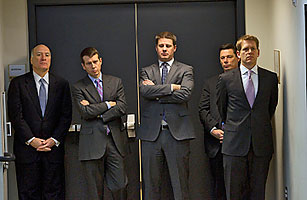
When Barack Obama traveled to Texas this month to talk immigration, David Plouffe, his top message guru, decided to stay home and watch Twitter instead. While Obama spoke, Plouffe sat before two flat-screen televisions in the White House complex. One showed live footage of Obama in El Paso. The other flickered with a lightning-quick vertical ticker tape of people tweeting with the #immigration hashtag, reacting line by line to the President in real time. “I find it useful,” Plouffe says, “to see what’s penetrating.”
When Obama went off script to joke that Republicans would soon demand a border moat filled with alligators, a blur of Twitter messages showed people sending the quote to friends and followers, signaling a messaging victory of sorts. “It’s kind of the next evolution,” Plouffe explains. “Remember back in 2008, you’d have the presidential debate, and then most of the networks would have some sort of dial going up and down. That seems very Jurassic Park–like compared to this.”
Plouffe points to the recent announcement of the Osama bin Laden raid. By the time Obama spoke, shortly after 11:35 p.m. E.T. on a Sunday, 56.5 million Americans had their televisions on to watch the speech — Obama’s largest audience as President, according to Nielsen. An additional million-plus people watched the speech stream on WhiteHouse.gov. Word had traveled fast in two hours. “People were texting each other and tweeting and on Facebook and doing some old-fashioned landline calling, I’m sure,” Plouffe says. “That’s how the world works these days.”
With the 2012 campaign approaching, Plouffe is looking for every opportunity to sharpen Obama’s edge. He has leaned heavily on the 10-person department that handles digital outreach and launched efforts to interact with the public, including a series called Advise the Adviser, in which citizens are invited to write in policy recommendations. He has also issued calls for Americans to organize roundtables, using online White House tools, to discuss immigration policy. “There is no guarantee that you are going to get any of those people through any other means,” he says, noting shrinking audiences for TV news.
Sometimes, Plouffe just creates his own news. For the recent White House Correspondents’ Dinner, Plouffe’s team created a fake movie trailer in the spirit of the Oscar-winning film The King’s Speech, hoping it might go viral. The YouTube video of Obama’s remarks has already been watched more than 8 million times, a bigger audience than that of most nightly network newscasts. “People saw that and said, ‘I am going to share it with my family and friends,'” Plouffe says proudly. “You have to find ways to compound what you are doing.”
See pictures of President Obama’s visit to Ground Zero.
See the 140 Best Twitter Feeds.